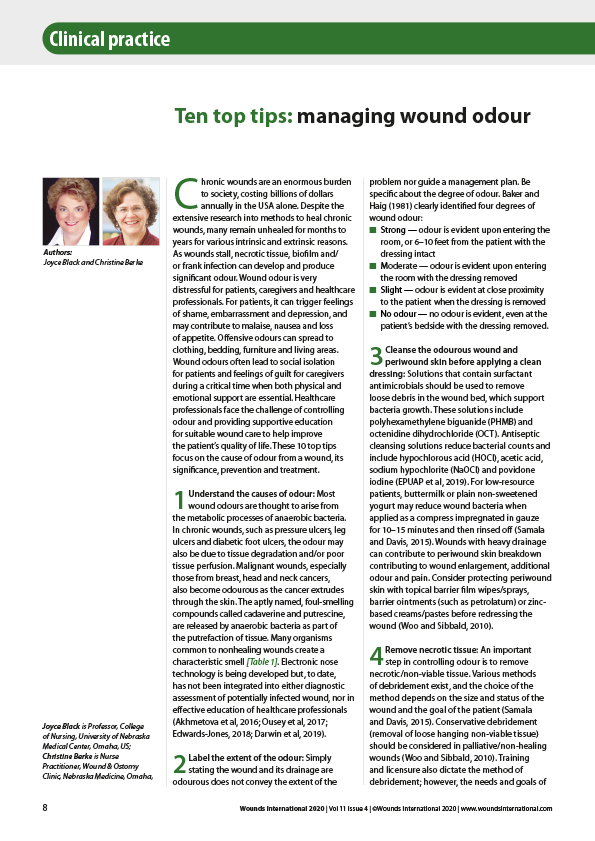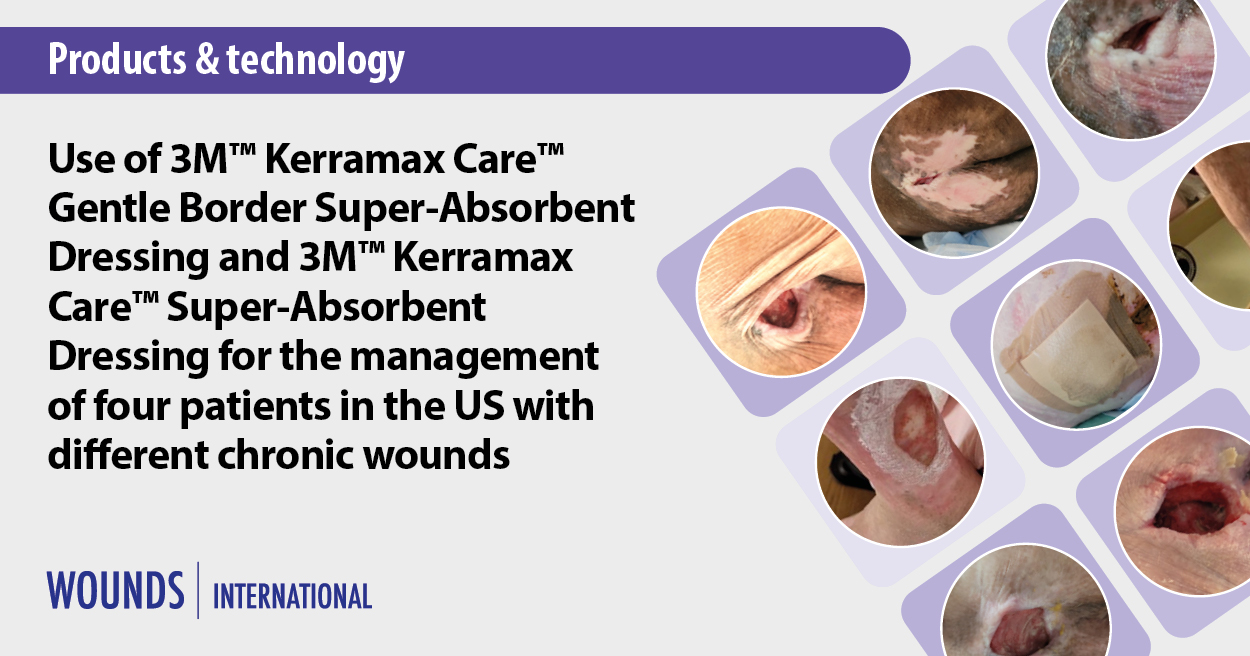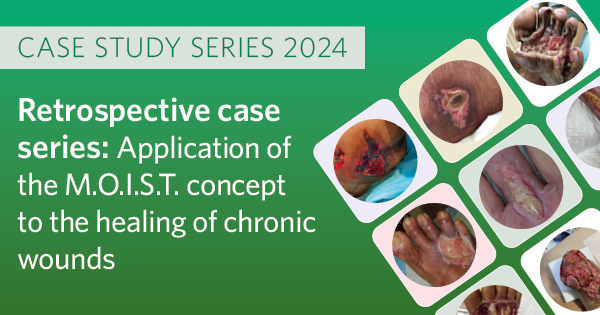Chronic wounds are an enormous burden to society, costing billions of dollars annually in the USA alone. Despite the extensive research into methods to heal chronic wounds, many remain unhealed for months to years for various intrinsic and extrinsic reasons. As wounds stall, necrotic tissue, biofilm and/ or frank infection can develop and produce significant odour. Wound odour is very distressful for patients, caregivers and healthcare professionals. For patients, it can trigger feelings of shame, embarrassment and depression, and may contribute to malaise, nausea and loss of appetite. Offensive odours can spread to clothing, bedding, furniture and living areas. Wound odours often lead to social isolation for patients and feelings of guilt for caregivers during a critical time when both physical and emotional support are essential. Healthcare professionals face the challenge of controlling odour and providing supportive education for suitable wound care to help improve the patient’s quality of life. These 10 top tips focus on the cause of odour from a wound, its significance, prevention and treatment.







